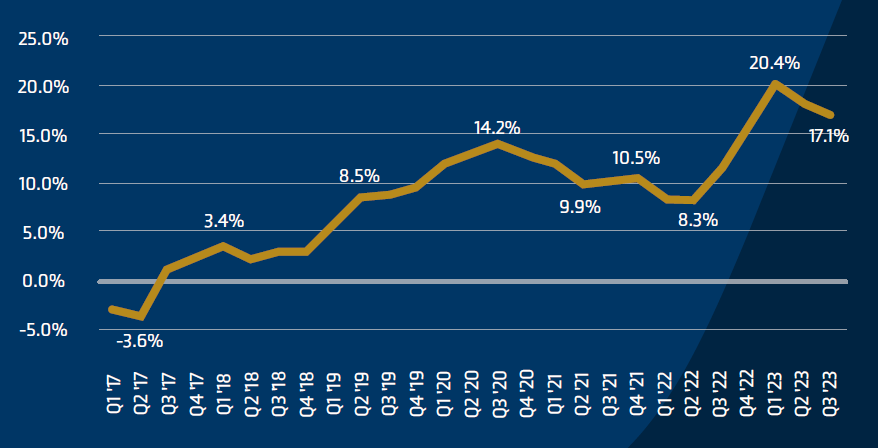Real EstateInsurance Pricing & Market Update
Q1 2024
The real estate industry has experienced turbulent swings in recent years. Market dynamics, including fluctuations in property values, poor economic conditions, and rising interest rates, have negatively impacted real estate clients. With economic downturns, there can be decreases in the need for additional commercial spaces such as retail centers, office buildings, and warehouses, but rarely habitational exposures. The real estate sector continues to grow in acquisitions and thirdparty management.
From ownership and third-party management to research, consulting, valuation, and asset management, the real estate industry encompasses a range of specialized activities. Revenue growth is expected as many habitational projects and commercial projects are completed and online. The housing shortage continues to be a driver. Improved economic conditions will help drive industry growth due to an increased demand for retail and multifamily habitational space. The industry needs to stay vigilant, considering high-interest rates that continue to influence commercial building demand, increases in construction labor costs, and a more complex insurance market.

| Non-CAT exposed property with a favorable loss history | 17% to 30% increases |
| CAT exposed property with favorable loss history | 30% to 50% increases |
General Liability
Excess Liability
| General Liability | Up 15% – 30% |
| Umbrella & Excess Liability – Middle Market | Up 15% – 30% |
Workers’ Compensation
Auto
| Workers’ Compensation | Flat to 5% |
Cyber
| Cyber | Flat to 15% |
$137M Verdict: A plaintiff suffered racial harassment at the workplace from a coworker and supervisor during their twoyear employment; he sued. Jury awarded $136.9 million.5
$6M Verdict: A family moving into an older apartment discovered their child developed neurological issues due to lead paint, presumed due to the property’s age. The property also had a severe cockroach infestation. Plaintiffs, claiming non-disclosure of hazards and habitability issues, received a settlement of $6 million after disputing allegations of improper supervision and lack of hygiene.5

Partner with your broker early to prepare for any changes to increase greater renewal success.
It is important to work with your broker’s industry experts who understand the business and the market for placing the specific risk. Collaborating with a team that can best represent your risk and partner with your operations is more critical than ever in this disciplined market we are experiencing.
IMA has a team solely dedicated to managing cyber risks. They offer expert assistance, including coverage analysis, financial loss exposure benchmarking, contract language review, in-depth cyber threat analysis, and strategic development of comprehensive, high- value cyber insurance programs.
Our contract review teams add value to our clients’ overall risk management program by ensuring the indemnity language is market standard and doesn’t expose our clients to unforeseen losses that may not be insurable.
Jim Litterer
EVP, National Real Estate Practice Director
Crystal Kohnert
SVP, National Accounts Director – Real Estate
Angela Thompson
Sr. Marketing Specialist, Market Intelligence & Insights